Lea (1916)
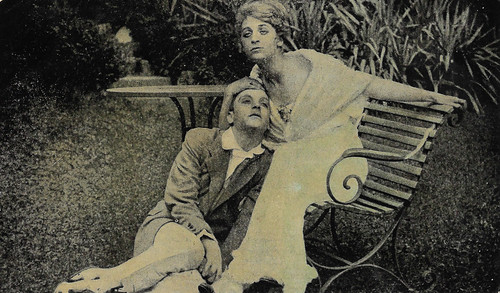
Spanish cromo by Chocolate Imperiale, no. 1 of 6. Photo: Sabaudo Film / J. Verdaguer. Diana Karenne and Umberto Casilini in Lea (Diana Karenne, Salvatore Aversano, 1916).
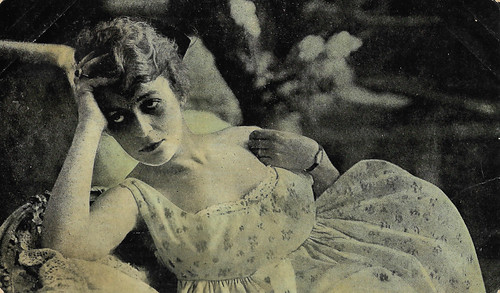
Spanish cromo by Chocolate Imperiale, no. 2 of 6. Photo: Sabaudo Film / J. Verdaguer. Diana Karenne in Lea (Diana Karenne, Salvatore Aversano, 1916).
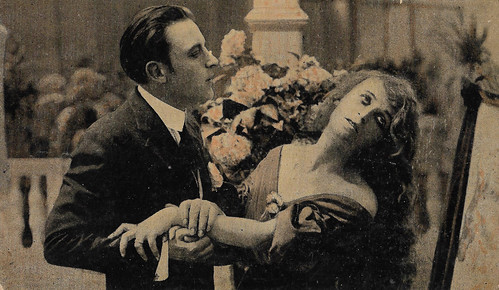
Spanish cromo by Chocolate Imperiale, no. 3 of 6. Photo: Sabaudo Film / J. Verdaguer. Diana Karenne and Umberto Casilini in Lea (Diana Karenne, Salvatore Aversano, 1916).
Lea (Diana Karenne) leaves her parents' home to marry the artist Riccardo (Umberto Casilini). She returns when she is warned her mother is ill, but she arrives too late. Her mother already died. Lea goes out of her mind and is locked up in a convent by her relatives.
After eight years, she is declared sane and looks for Riccardo. Yet, he was told she died, so he has remarried Ida (Alfonsina Pieri). Initially, Lea tries to claim her rights over the second wife, but when she discovers the latter has given Riccardo two children, she retreats into silence and forever.
Lea was officially directed by Diana Karenne herself, but Salvatore Aversano was her uncredited co-director. The film was based on an eponymous play (1888) by the radical writer Felice Cavallotti, adapted for the screen by director-screenwriter Guglielmo Zorzi. The plot shares a few similar elements with Dario Niccodemi's play 'L'ombra' (1915), which was filmed three times in the silent era including a 1923 version with Italia Almirante.
The cinematography of Lea was done by Carlo Montuori. Montuori was a long-standing operator and DOP in Italian cinema history, who started out at Comerio Film in 1907. He would be one of the most sought cinematographers of Italian sound cinema of the 1930s and 1940s, and, after the war, would shoot such classics as De Sica's films Ladri di biciclette/Bicycle Thieves (1948), L'oro di Napoli/The Gold of Naples (1954), and Il tetto/The Roof (1956).
The Turinese film journal La Vita Cinematografica praised the story and script of Lea but thought Karenne had overdone the number of close-ups of herself. Instead, the public success of Karenne's first film as a director inspired the founding in 1917 of the company David-Karenne Film, later named Karenne Film.

Spanish cromo by Chocolate Imperiale, no. 4 of 6. Photo: Sabaudo Film / J. Verdaguer. Diana Karenne (left), Alfonsina Pieri and Umberto Casilini in Lea (Diana Karenne, Salvatore Aversano, 1916).
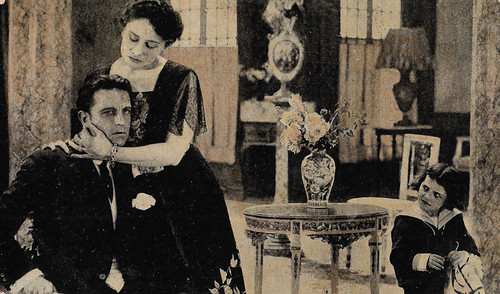
Spanish cromo by Chocolate Imperiale, no. 5 of 6. Photo: Sabaudo Film / J. Verdaguer. Possibly Umberto Casilini and Alfonsina Pieri in Lea (Diana Karenne, Salvatore Aversano, 1916). The two could also be Teresa Boetti-Valvassura (the Duchess) and Roberto Vilani (Duke of Baiamonte), as indeed Pieri seems to look different. The little boy could be a girl actress, Carmen Varriale, who plays little Peppino in the film.

Spanish cromo by Chocolate Imperiale, no. 6 of 6. Photo: Sabaudo Film / J. Verdaguer. Diana Karenne in Lea (Diana Karenne, Salvatore Aversano, 1916).
Sofia di Kravonia (1916)
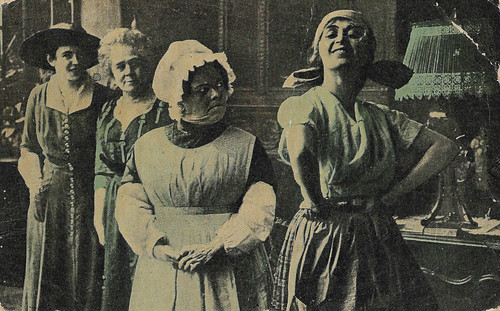
Spanish cromo by Chocolate Imperiale, no. 1 of 6. Photo: Pasquali / Vay Film / J. Verdaguer. Diana Karenne in Sofia di Kravonia (Ernesto Maria Pasquali, 1916).

Spanish cromo by Chocolate Imperiale, no. 3 of 6. Photo: Pasquali / Vay Film / J. Verdaguer. Diana Karenne in Sofia di Kravonia (Ernesto Maria Pasquali, 1916).
After Lea,Diana Karenne went back to Pasquali Film to be directed in Sofia di Kravonia (1916). Sofia (Diana Karenne) is a poor orphan who is picked up by the Smiker couple and becomes their assistant cook, but at every new mischief of the rather unskilled assistant, the cook Teresa exclaims: I think they've sent Sofia as punishment for our sins. Ms. Zerkowich visits the Smikers and Sofia manages to get into her service.
Lieutenant Casimir de Savres meets her at Ms. Zerkowich and the young man falls in love with her, yet the king of Kravonia is in the middle of a war and Savres is called to arms. The King himself is quite old and ill. The Countess of Ellenburg (probably Mary-Cléo Tarlarini), the morganatic second wife of the king, thus plots to have her son Alexis ascend to the throne and orders her aid, captain Mistich, to kill the crown prince Sergio (Angelo Ferrari), the king's son from his first wife. Sofia herself meanwhile has become the widow of the lieutenant and is present at the court. By killing the hitman she prevents the assault on the crown prince, who then falls in love with her. The king out of gratitude promotes her to a baroness, to the great jealousy of the Countess, her new rival.
Alexis' mother must save the captain or else she herself may be compromised by her close relationship with him and to do so she resorts to the Minister of War. Meanwhile prince Sergio, at the head of his loyal mountain people, wants to obtain some canons at the Ministry, which the Minister uses to save the captain. "Your Highness, we will give the guns if you pardon captain Mistich", the Minister says to the prince. The latter disregards the offer and forcibly takes over the canons. The Royal court is in mourning, as the King has fallen victim to an apoplectic stroke, but the Countess of Ellenburg hides the death of the sovereign to the people and prepares a new disappearance of prince Sergio so that her son may ascend the throne.
Forced to lead her horse in a frenetic gallop through the fields, Sofia reunites with Sergio and informs him of the danger that awaits him in the capital, while meanwhile Mistich and his horsemen try to get hold of them so that Alexis of Ellenburg can be proclaimed heir to the throne. Yet, the mountain people led by Sergio and Sofia fight the horsemen and win. Still, Sergio is badly hurt which jeopardizes the victory. However, Sofia proves to have a real hero's heart, becomes colonel, and leads the small army to victory and into the capital, where she finally triumphs. One day after, the new sovereigns ascend to the throne: Sergio and Sofia.
Other actors in the film were Armand Pouget (who often played villains, so he may have been Mistich), Mario Cimarra, and Giusto Olivieri. The film premiered in Rome on 26 March 1917. While the critic of the northern (Turin-based) journal La Vita Cinematografica panned the film, the critic from the southern (Neapolitan) journal Film loved it, and so did the audience: the rapid, diverse and emotional action, the excellent exteriors and interiors, and Karenne's splendid and manly performance, in particular as the frenzied colonel.

Spanish cromo by Chocolate Imperiale, no. 4 of 6. Photo: Pasquali / Vay Film / J. Verdaguer. Diana Karenne and Angelo Ferrari in Sofia di Kravonia (Ernesto Maria Pasquali, 1916).
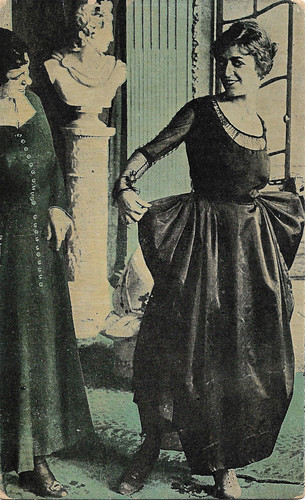
Spanish cromo by Chocolate Imperiale, no. 5 of 6. Photo: Pasquali / Vay Film / J. Verdaguer. Diana Karenne in Sofia di Kravonia (Ernesto Maria Pasquali, 1916). NB A copy of the head of the Apollo Belvedere in the background.

Spanish cromo by Chocolate Imperiale, no. 6 of 6. Photo: Pasquali / Vay Film / J. Verdaguer. Diana Karenne and Angelo Ferrari in Sofia di Kravonia (Ernesto Maria Pasquali, 1916).
La peccatrice casta (1919)
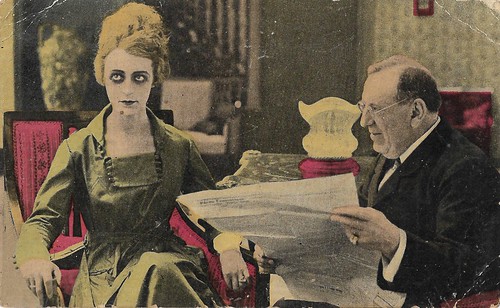
Spanish cromo by Chocolat Imperiale, Barcelona, no. 1 of 6. Photo: Tiber Film / Verdaguer. Diana Karenne in La peccatrice casta (Diana Karenne, Gennaro Righelli, 1919).

Spanish cromo by Chocolat Imperiale, Barcelona, no. 3 of 6. Photo: Tiber Film / Verdaguer. Diana Karenne and Alberto Pasquali in La peccatrice casta (Diana Karenne, Gennaro Righelli, 1919).
In 1918, Tiber Film, in Rome, launched, especially for her, the series 'Karenne Films'. This series included La peccatrice casta/The chaste sinner (Diana Karenne, Gennaro Righelli, 1919). In 1919, Karenne left Tiber Film already, probably because of some internal disagreement.
Wanda (Diana Karenne) is a popular dancer, but very ill. When she collapses during a performance, a count (Alberto Pasquali), comes to aid, falls in love with her, and wants to marry her.
Wanda accepts but after the wedding she starts dancing and her mundane life again, which she never could say goodbye to. She ends up falling for another man (Mario Parpagnoli), while her husband, after finding out, bitterly leaves for the US.
One year after, the husband returns and finds her alone, with a child, and left by her lover. He reunites with her, pardons her, and accepts the child too.
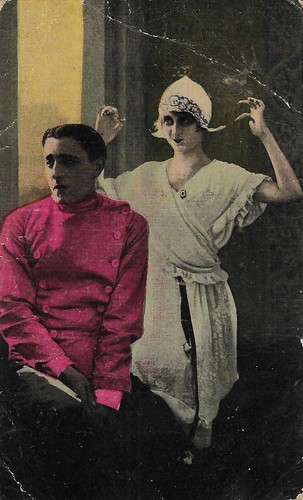
Spanish cromo by Chocolat Imperiale, Barcelona, no. 4 of 6. Photo: Tiber Film / Verdaguer. Diana Karenne and Alberto Pasquali in La peccatrice casta (Diana Karenne, Gennaro Righelli, 1919).

Spanish cromo by Chocolat Imperiale, Barcelona, no. 5 of 6. Photo: Tiber Film / Verdaguer. Diana Karenne and Alberto Pasquali in La peccatrice casta (Diana Karenne, Gennaro Righelli, 1919).

Spanish cromo by Chocolat Imperiale, Barcelona, no. 6 of 6. Photo: Tiber Film / Verdaguer. Diana Karenne in La peccatrice casta (Diana Karenne, Gennaro Righelli, 1919).
Sources: Vittorio Martinelli (Il cinema muto italiano, 1916, II), Cristina Jandelli and Linda Del Gamba (Women Film Pioneers Project), Wikipedia (Italian), and IMDb.
No comments:
Post a Comment